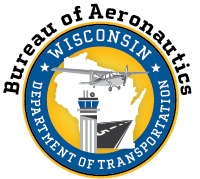by Bob Worthington
www.BobWorthingtonWriter.com
Published in Midwest Flyer – August/September 2020 issue
As I write this column, it is days after the disastrous ending of Pakistan International Airlines Flight #8303. At 2:40 pm on May 22, 2020, an Airbus A320 aborted a landing at Jinnah International Airport in Karachi, Pakistan, attempted a go-around and crashed on its second approach to landing, killing 97 of the 99 crew and passengers aboard.
What happened is not in dispute. I watched videos of this event and listened to tapes of radio transmissions between the pilots and air traffic controllers (all in English). It was daytime VFR weather. The plane was terminating an uneventful flight. It radioed descending from 3500 feet to 3000, 5 miles out, reporting being established on ILS 25 Left. For some reason, the gear was never lowered. The twin turbofan engines are mounted on pylons forward and below the wings (lower than the fuselage).
Flight #8303 landed on its engines almost half-way down the 11,155-foot runway, touching down twice 1,000 feet apart before initiating a go-around. Attempting to climb for a second approach to 25 Left, the pilots radioed that they were unable to get above 2000 feet. Struggling to fly, it seems the engines lost thrust as they were no doubt damaged when the engine pods scrapped the runway. The aircraft crashed into a housing area, only 4,462 feet short of the runway.
I discussed the accident with a good friend, an aircraft accident investigator (he holds Air Transport Pilot, Flight Instructor, and Airframe and Powerplant Certificates) who is familiar with this accident. He pointed out that the aircraft was too high on approach and too fast and did not drop its gear, so he believes the crash was pilot error. In the available audio with Air Traffic Control, the pilots are very calm with their transmissions and, more importantly, made no indications they had any gear issues. Yet a gear warning signal is heard in the background. Yet, they did not declare an emergency or request emergency vehicles for a belly landing. Hopefully, when the black boxes are recovered, the conversation inside the aircraft will tell the rest of the story of a mysterious belly touch down.
What happened is known, but “why” is not. Did the pilots lose focus on final? Why were they over 1300 feet high when reporting established on the ILS? Did the gear fail to drop? Did the plane encounter mechanical problems? Until the investigation is complete, we will not know the “why.” And these were professional pilots. Clearly, landings can be dangerous.
The FAA reports for 2019 that “loss of control” is the number one reason for general aviation (GA) accidents. Number nine is “low-altitude operations.” “Landings” fall into both categories. Additionally, over 50% of accidents are the result of the pilot either not doing something right or doing something wrong: “pilot error.”
The transition from flight to horizontal movement on the ground can be tricky and at times difficult for veteran pilots. It requires total focus by the pilot, and that many things must be done simultaneously, quickly, and correctly. And if the plane has retractable gear, this just adds another component to the equation.
Additionally, things may happen that require your immediate attention and take your focus away from landing. This is when problems can occur.
As a new pilot, I was practicing night landings in my Cessna 172 on 12L (today 13L) at San Antonio International Airport, San Antonio, Texas (KSAT). The runway is the shorter of the two, being around 2600 feet long. I told the tower after my next landing, I would taxi to parking. Tower told me to land on the 8500-ft. 12R because my hangar was alongside that runway. As I turned onto base, I could see the landing lights of an airliner, on final to 12R. I radioed the tower, describing the plane lined up for 12R. The tower said I was cleared to land on 12R.
I was touching down as the airline pilot complained to the tower that a plane was on the runway. The airliner could not land. I was ready to veer left and taxi into the grass separating the two parallel runways when the tower told the airliner to go around. I taxied to my hangar.
Another time I was in my Mooney 231, IFR, landing in Louisville, Kentucky (KSDF), when on short final, I was told to abort and immediately go around. Gear and flaps up, I initiated a quick left turn to get back on the ILS to land. Apparently, a Cessna 182 from out of nowhere, had landed right in front of me and was not talking to the tower.
I intercepted the localizer again, and while on short final, I went through my mental landing checklist, which includes “gear down,” which it was not. I then put the gear down. Ever since I had a retractable gear airplane, I always, on short final, confirm that the gear is down and locked.
Another time, I had departed an airport on a two-day cross-country flight. I could not get the gear up in my Mooney. The airport I just departed from had no maintenance facilities, so I decided to continue to my destination airport, which had a Mooney service center. Talking to approach control, I explained my situation, indicating that I had no idea if the gear was locked or in some position between down and locked or up.
The tower reported my gear looked fully extended. To thwart trouble, I was met at the end of the runway with two emergency vehicles, one a fire truck. The gear held and I taxied to the service center where the problem was identified and repaired. Sometimes a precarious landing can be instigated by air traffic controllers.
On another occasion, I was on an instrument flight east of San Diego, Calif. and cleared to land at Lindbergh Field, now San Diego International Airport (KSAN). I was told to intercept the localizer for Runway 9 and broke out of the clouds, but the tower would not permit me to go lower due to traffic. When allowed to descend, on short final, the rapid descent was too fast to safely land. Telling the tower, “I am too fast to land and going around,” I made an easy landing on the second try.
At the fixed base operator, I called the tower and explained that I was held too high, too long to slow down enough to safely land. I asked what I should have done. The man I spoke to indicated that it is my job to fly and land safely, and it is the air traffic controller’s job to ensure aircraft separation. I was told the next time to tell the tower I must get lower to slow down enough to land, and it is then the controller’s problem to deal with the traffic. The tower should accommodate what I need to land safely.
One of the most difficult airports to land at is the former Williams Air Force Base, now Phoenix-Mesa Gateway Airport (KIWA) in Mesa, Arizona. It was shut down as an Air Force base in 1993 and re-opened as Gateway a year later. The airport has three long parallel runways (9,300, 10,201 and 10,401 feet). Due to its heavy traffic – mostly GA – it averages a landing every 6 minutes.
Approach control is constantly talking, so getting permission to land can be challenging. But I finally secured permission to land (on the center runway). On short final, the tower said that the aircraft in front of me was not off the runway and asked if I could side-step to my right and land. I replied “yes,” and did just that.
The fixed base operator was at the end of the runway and off to the left, so I had over a mile to taxi. I noticed a police car with lights on following me on the taxiway. I pulled in, parked, and shut down my engine and beside me was a Mesa police car, with roof lights pulsing away. As I exited my aircraft, a police officer came over with a big notebook.
He demanded to know why I did not land on the runway I was supposed to. He said that I deviated from my correct flight path, presenting a clear danger. I was perplexed. Why is a police officer questioning my landing? I explained that the tower told me to land on the right. He didn’t believe me and asked if I had the proper approach plates and airport diagram to land where I did. I had everything on both paper and my iPad, which I showed him. He glanced at my material, grunted “thank you,” and left. That was a first for me, to be pulled over by a police car, while taxiing in my airplane.
All of these disruptions occurred upon landing. All could have been the cause for me to lose focus and botch a landing. One time it took me five approaches to land at a short country airport in New Jersey. The airport was surrounded by tall trees with the runway terminating at a lake. A normal landing could not be accomplished as the tall trees obscured the runway. If one landed too long, the plane would end up swimming. On every approach, I was too high and too fast to safely land, so I went around.
My wife was becoming apprehensive as I just could not land the plane. I was a VFR-only pilot at the time and it was getting dark and the weather was getting worse, so I needed to land. Finally, I was able to set up the approach properly and make a successful landing. While it took five attempts to land safely, I finally made it.
All of these events reflect what can happen during the landing phase of flying an airplane. Every flight had the possibility of ending like Flight #8303, but did not. Why? Training!
As a pilot I have invested quite a bit of time practicing how to handle emergencies. I would fly with a safety pilot or flight instructor and he would create a safety issue where I would have to decide to either land or clean up the plane and go around. Early on as a pilot, I purchased a flight school grade analogue desktop flight simulator where I would practice missed approaches under IFR conditions. Therefore, if the real situation occurred, I was prepared for it. I did what I trained for, remained focused and flew the airplane.
Training for the unusual instills confidence and improves proficiency. Some GA pilots are not that into continuous recurrent training, but those who do, have a better chance of safely handling emergencies or making every landing a benign one.
EDITOR’S NOTE: Pilot, Viet Nam veteran and former university professor, Bob Worthington of Las Cruces, New Mexico, is the author of “Under Fire with ARVN Infantry” (https://mcfarlandbooks.com/product/Under-Fire-with-ARVN-Infantry/), and producer of the 2019 film “Combat Advisor in Vietnam” (www.borderlandsmedia.com). Facebook: Bob Worthington Writer (www.BobWorthingtonWriter.com).
DISCLAIMER: The information contained in this column is the expressed opinion of the author only, and readers are advised to seek the advice of their personal flight instructor, attorney and others, and refer to the Federal Aviation Regulations, FAA Aeronautical Information Manual and instructional materials before attempting any procedures or following any advice discussed herein.

















